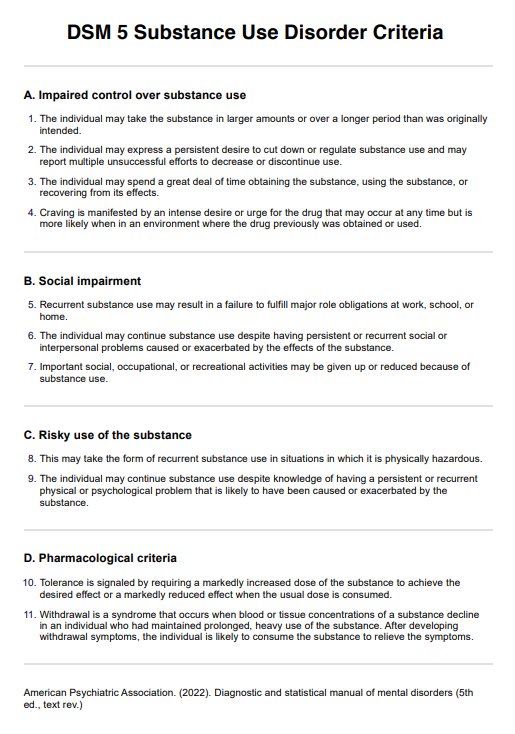Common signs include cravings, tolerance, withdrawal symptoms, neglect of responsibilities, and continued use despite negative consequences.

Substance Use Disorder DSM 5 Criteria
Understanding substance use disorder, its symptoms, withdrawal symptoms, causes, and diagnosis through DSM 5 criteria. Download our free Substance Use Disorder DSM 5 Criteria
Use Template
Substance Use Disorder DSM 5 Criteria Template
Commonly asked questions
Yes, substance use disorder is treatable through various interventions including therapy, medication, support groups, and rehabilitation programs.
Yes, substance use disorder can co-occur with other mental disorders such as depression, anxiety, and bipolar disorder, complicating treatment and management.
EHR and practice management software
Get started for free
*No credit card required
Free
$0/usd
Unlimited clients
Telehealth
1GB of storage
Client portal text
Automated billing and online payments











